Last Updated on January 19, 2024 by Greg Gillson
Common wisdom is that bird feeders should be placed 5 feet above the ground. But other heights may be better for your feeders.
This article discusses how high feeders should be above the ground. And it discusses reasons why you might want to place your feeder lower or higher.
 |
| Image by Matthew Gollop from Pixabay |
Keep bird feeder height at 5 feet to deter Squirrels
Many people have trouble keeping squirrels out of their bird feeders. It is an ongoing battle for some.
If you have a hanging feeder, you need a baffle over the top.
If you have a pole mounted feeder, you need to place a baffle up the pole, under the feeder.
Either way, squirrels can jump upward over 4 feet. You need to place the feeder 5 feet high so that the squirrels don’t jump up on them from the ground.
And squirrels can jump sideways 10 feet. That’s amazing! If they can climb a tree or fence or porch roof they can jump to your feeder from a surprising distance.
This is the primary reason to place your feeder 5 feet above the ground.
But not everyone has to contend with squirrels. Thus, there may be no reason to have your feeders 5 feet high.
Keep birds safe from Cats by placing bird feeders 5 feet high
Having a raised feeder might help protect your birds from housecats.
Usually, cats prefer to sneak up on birds from behind a dense bush or hiding place at ground level. Then they pounce.
Responsible bird feeding enthusiasts place their bird feeders 8-10 feet away from such a hiding place. That’s sideways, not up above the ground.
Having the feeders raised increases their safety from cats. Birds can spot any cats more easily if the bird feeder is raised. Five feet is a good height for this.
If you don’t have problem with cats in your neighborhood, then you have some more flexibility. You can choose a bird feeder height that is best for you and your birds.
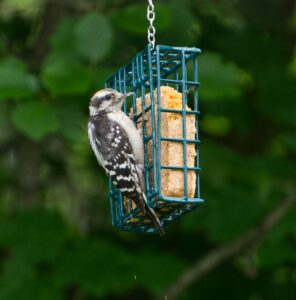
Make bird feeders 5 feet high for ideal Viewing Height
Sit in your easy chair and look out your living room window. There’s a good chance that your head is about 5 feet above the ground. That makes it eye-level with your 5 foot high bird feeder.
This is an excellent reason to have your bird feeder 5 feet above the ground!
However, perhaps you watch birds from an upstairs window. Perhaps you watch birds from behind a sliding glass door. Perhaps your favorite view is out a kitchen window while standing and cooking. If so, then there may be a better height than 5 feet for your bird feeder.
Bird feeder height under 5 feet makes Filling and Cleaning easier
No matter the height of the bird feeder, you must be able to reach it to refill and clean it.
A bird feeder that you cannot reach, or cannot easily reach, is worthless.
Thus, a feeder much higher than 5 feet above the ground would be hard to fill and clean regularly, unless you had some ladder or pulley system. But why?
On the other hand, if it was a second floor (or higher) balcony, you would still be able to reach it. Birds would be up in the air 15 feet or so from the earth. But they may be only 4 or 5 feet up from your balcony flooring.
Birds that feed high in the tree tops
Finches are seed eating birds that often feed on the pine, fir, and spruce cones high in the tree tops. Thus, they naturally feed quite high.
Purple Finches, Cassin’s Finches, Red Crossbills, Evening Grosbeaks, and Pine Siskins are such birds.
But they readily descend to feed on other foods and have no problem visiting a bird feeder.
These birds often like to feed on black oil sunflower seeds from tube feeders. Here is a good brand of black oil sunflower seeds.
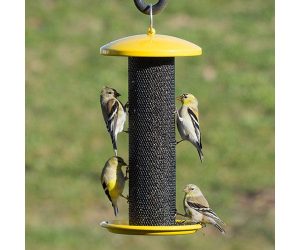
These birds also come to the ground to drink water or take baths.
When frightened, these birds often fly up into the tree tops.
Birds that feed in the mid level of the trees
Many birds feed on the trunk and branches of the trees. Many of these eat insects and seeds.
Such birds include chickadees: Black-capped, Carolina, Mountain, Chestnut-backed and others. Nuthatches feed in the mid-level: White-breasted, Red-breasted, Brown-capped, and Pygmy. Tufted, Oak, and Bridled Titmouses feed in lower parts of the tree. Also, Downy Woodpecker, Red-bellied Woodpecker, and others feed here.
All of these come to feeders and drop to the ground to drink and bathe.
These birds often like mixed seeds from hopper feeders best. My favorite brand of mixed seed that my birds really like is 50% black oil sunflower seeds and no filler.
 |
| Image by iihumi rakura from Pixabay |
Birds that feed low, mainly on the ground
Several kinds of birds feed primarily on the ground. They often scratch in the dirt looking for weed seeds that have fallen.
Feeder birds that love to eat on the ground include Dark-eyed Juncos. Several sparrows feed on the ground: White-throated, White-crowned, Golden-crowned, American Tree, Chipping, Song, Fox, and others. Towhees, including Eastern, Spotted, California, Canyon, and Abert’s feed on the ground. Mourning Doves, California Quail, and other pigeons and chicken-like birds feed on the ground.
Birds that prefer to feed on the ground often fly away low into the bushes when startled.
Ground feeders like to eat smaller mixed seeds from platform feeders.
Birds that feed at any height
Some birds really don’t care how high the bird feeder is.
Northern Cardinals don’t have much of a preference. Neither do House Finches or House Sparrows.
Chickadees will feed in tree tops or on the ground, even if they most often stay to middle heights. Most birds will got to where the food is.
Even the ground-loving sparrows will fly up to your balcony to a bird feeder.
How high to place your bird feeders
Where, then, should you place your bird feeders? How high (or low) can you go?
As you might guess from the foregoing, it might be better to have feeders at several heights. It depends upon where you can see them, what predators you may have to worry about, and what they might naturally prefer.
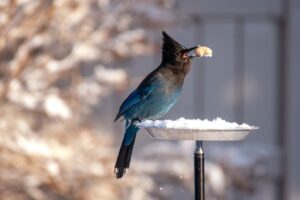
5 foot high bird feeder placement
The traditional 4 or 5 foot tall bird feeder is convenient.
Birds that feed at all levels will use it. It is easy for you to watch the birds. It is easy to clean and refill. It is fairly safe from cats. You can use baffles to try to keep squirrels out.
You can place bird feeders on a pole, on a fence, or hang them from a tree or other tall structure.
Ground level bird feeders
You can feed some birds right on the ground. A cement patio might be perfect for juncos in the winter.
You may use a tree stump as a feeder, or put a bird feeder on a low stump.
There are low platform bird feeders you can purchase, too.
I’ve written an article about feeding birds on the ground.
Higher bird feeders
Finch feeders should be hung higher, rather than lower.
Living as I do, now, in Washington State among the towering fir trees, I imagine a very high bird feeder.
I see and hear Evening Grosbeaks, Pine Siskins, and Purple Finches in the tree tops. But only the siskins descend to the feeders right now. In winter the others will visit.
What if I was 40 years younger and climbed the tall Douglas fir up 80 feet and attached a pulley and rope? Then I could attach one of those bird seed bells and raise it high in the tree! It might cause birds to come down to the porch feeders that just fly overhead now.
Okay, that’s probably unrealistic.
But what about a bird feeder high in a fire lookout tower? In the window of a down town high rise? On the 3rd story apartment balcony?
Really, if you have a window or balcony, no matter how high, you can probably feed birds at your level.
Wrapping Up
Different birds prefer feeders at different heights for a variety of reasons, primarily related to their natural habitat and feeding strategies so you need to experiment in your backyard to see what birds are around and which feeders they prefer.
Also the combination of birds visiting your backyard will affect what feeder height works. Dominant birds, like larger species or aggressive sparrows, often claim higher feeders, pushing smaller birds to lower ones. This creates a vertical hierarchy, minimizing competition and ensuring all birds have access to food.
Smaller birds might feel safer at lower feeders, staying away from potential bullies in higher perches.
So what are you waiting for? Get out there and play around!
Frequently Asked Questions
What is the best height to hang a hummingbird feeder?
Choosing the perfect height for your hummingbird feeder is key to attracting these delightful feathered friends! Here are some tips to keep in mind, ensuring a buzzing good time for your winged visitors:
Sweet Spot: Aim for a height between 5 and 6 feet above the ground. This offers hummingbirds a clear view of the feeder while placing it out of reach of most ground predators like cats and squirrels.
Location Matters: Consider the surrounding vegetation and shelter. Avoid placing the feeder directly under dense branches or close to busy areas, as hummingbirds prefer open spaces with easy access. Choose a spot with partial shade, especially during hotter afternoons, to keep the nectar cool.
Swaying with the breeze: Hanging the feeder from a sturdy branch or hook allows it to gently sway in the breeze, mimicking natural flower movement and attracting the attention of curious hummingbirds.
Multiple feeders? Space them out! If you’re lucky enough to have multiple hummingbird visitors, try placing additional feeders about 6-8 feet apart. This reduces competition and allows each bird to feed comfortably.
How far away from the house should a bird feeder be?
The ideal distance for your bird feeder from your house depends on several factors, aiming to balance safety for the birds with your own enjoyment of their presence:
Distance for Bird Safety:
- Minimize window collisions: Birds can mistake large window reflections for open space, leading to collisions. Maintain a minimum distance of 3-5 feet between your feeder and windows to discourage close approaches and potential crashes.
- Predator risk: Keep feeders at least 10-12 feet away from bushes, trees, or structures that can provide hiding places for cats, squirrels, or other predators. This gives birds a safe retreat if danger approaches.
- Stress reduction: Place feeders in calmer areas away from direct noise or disturbance from human activity. Aim for a distance of 5-10 feet from walkways, patios, or areas with frequent movement.
Distance for Your Enjoyment:
- Clear view: Position feeders close enough to your house for you to comfortably observe the birds. A distance of 8-10 feet allows you to enjoy their activities without feeling intrusive.
- Minimize mess: Depending on the feeder type, consider the potential for scattered seeds or bird droppings. Adjust the distance slightly to avoid messy areas near doorways or walkways.
- Sound of nature: Enjoy the delightful chirps and songs! Place feeders within earshot, around 5-10 feet away, to appreciate the soundscape the birds bring to your environment.






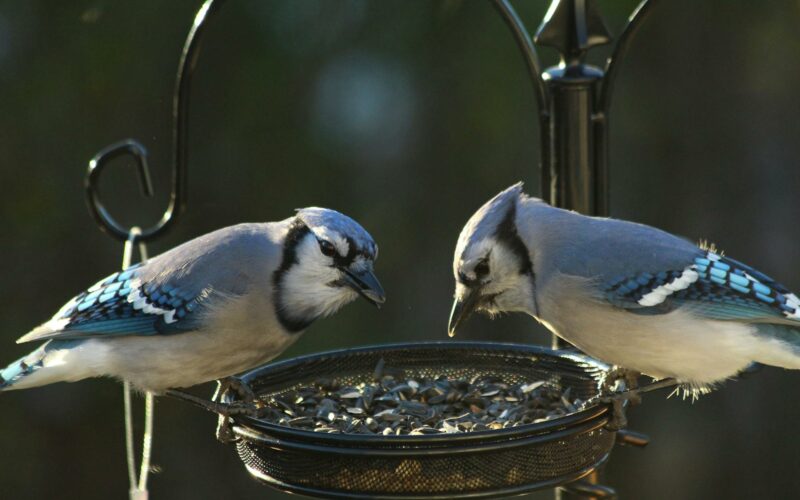
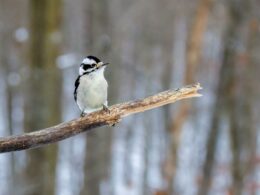
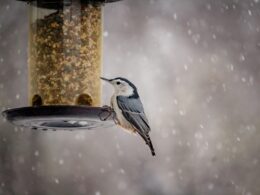
I live in Arizona. The birds I like to feed are quails,doves and some other little birds that come around. birds I HATE…… PIGEONS!! Will quails use standing feeders 6 ft off the ground? I can't find ANY info about feeding quail but NOT EVER PIGEONS!!
I live in Washington now and have a couple of Eurasian Collared-Doves and dozens of Band-tailed Pigeons at my feeders.
There really is no difference between doves and pigeons, other than the name. The name dove is often given to smaller pigeons, but not absolutely so.
You have Mourning Doves, White-winged Doves, Eurasian Collared Doves, and perhaps Common Ground Doves, Inca Doves, and Domestic Pigeons in Arizona.
There is no way I know of to feed quail, but not pigeons. They eat the same foods and prefer eating on the ground. The pigeons will eat higher than the quail.